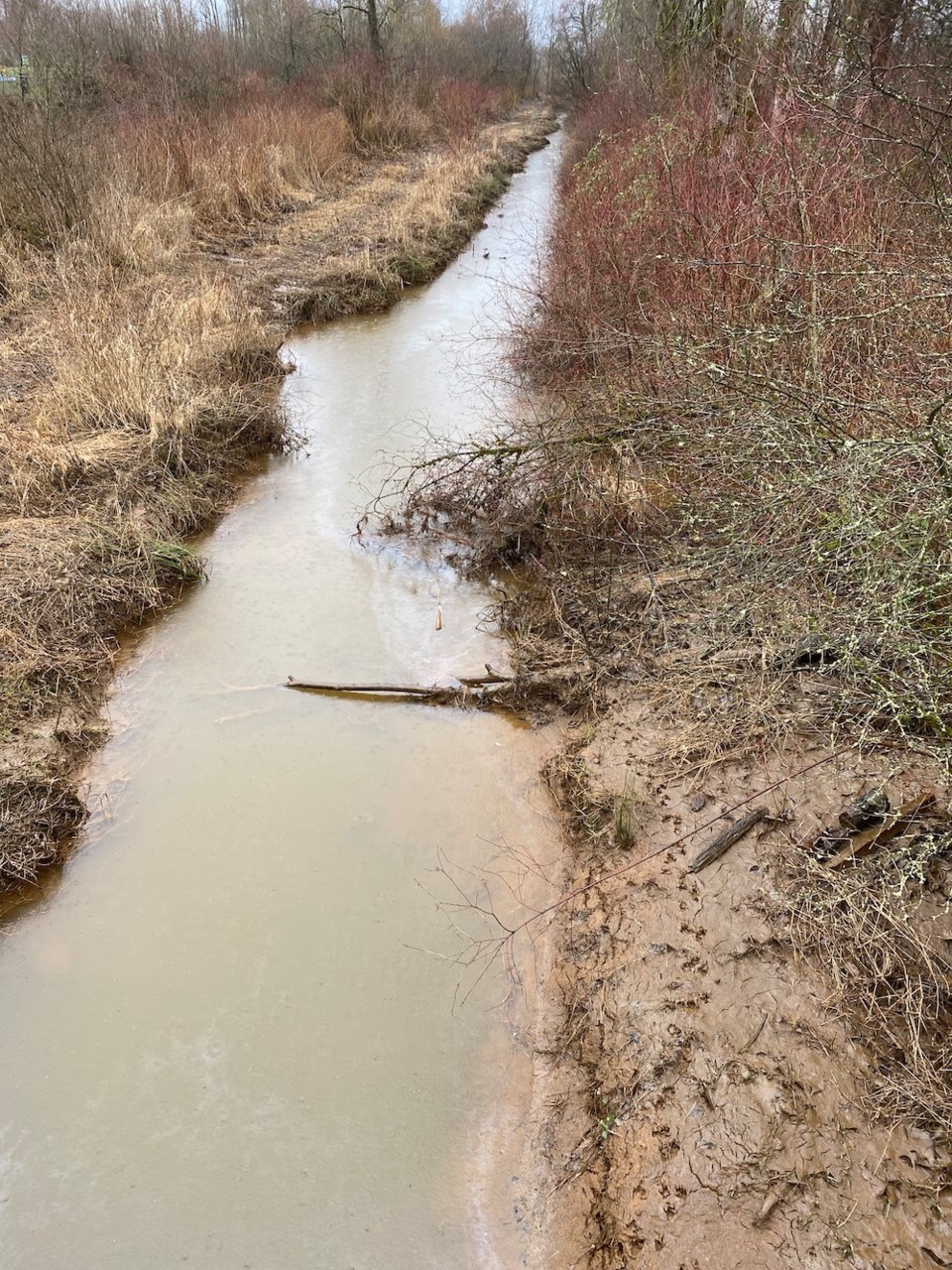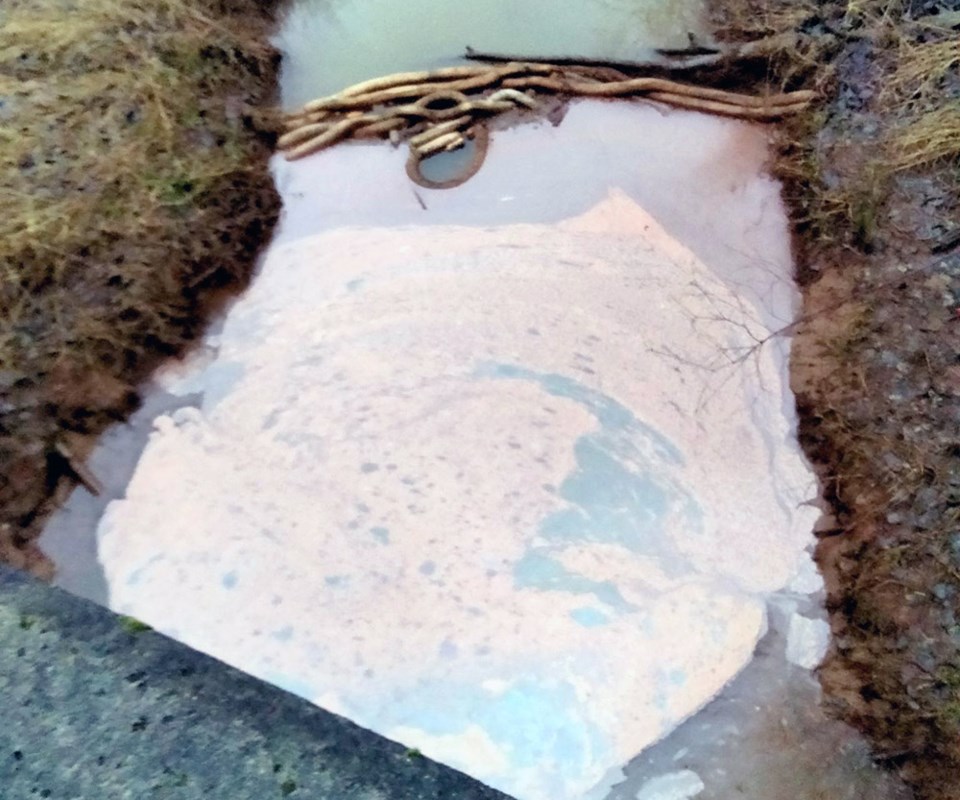An oily-looking sludge that pooled in a Port Coquitlam watercourse last week was not an oil spill and is nothing to worry about, the city says.
The mass of rusty brown goo had an oily sheen and appeared to contaminate a watercourse located close to Dominion Park in the Fremont Village neighbourhood.
However, upon closer inspection it was revealed that the sludge was "naturally occurring iron ochre, not spilled fuel/hydrocarbons," according to the city's public works department.
An alert resident photographed the sludge after the city put absorbent booms around it to prevent it from flowing down the channel.
The resident took a photo on Feb. 6, and wondered what the large, rusty coloured mass was, believing it to be pollution.
On Feb. 9, when the Tri-City News visited the site after heavy rains, the sludge mostly dispersed.
It turns out, however, after containing the mass, Port Coquitlam public works staff identified the material as iron ochre, which develops when groundwater containing dissolved iron is exposed to oxygen.
According to the city, water that has emerged after passing through areas full of organic matter like peat, rotting logs or plants contains dissolved iron, which is oxidized by bacteria.

A kind of bacteria goo in stagnant water
This process creates iron ochre which causes water to look rusty and produces a rainbow sheen at its surface.
That sheen breaks up when you touch it with a stick unlike spilled petroleum products, which is an easy way to determine whether the material is iron ochre or an oil product.
"If it does not break up, it may be caused by spilled petroleum products and should be reported immediately to the city," the spokesperson confirmed.
An online science journal Science Direct says the Sphaerotilus-Leptothrix group of organisms, also known as "sewage fungus," is what oxidizes the reduced iron, depositing it along with their "mucilaginous filaments."
It's this liquid brown mass that is often seen in stagnant pools or wetlands.
Others have raised questions about the material.
On the Port Coquitlam Community Facebook page this week, someone else raised a question about a rusty brown substance found in a small creek.
Indigenous artists may have used it as pigment
Several knowledgeable people replied that it was oxidizing bacteria.
According to an article by the CBC, this material may have been used to paint ancient pictographs in the Babine Lake area of B.C.
In a test, an anthropologist heated the material to 700°C and found that it turned a bright red colour.
CP Rail, meanwhile, responded to a Tri-City News query stating that there had been no diesel fuel spill on its rail yard property.
Last year, on Feb. 4, there was a spill of diesel fuel into a ditch on CP rail property. Some of the spill flowed into the Fremont area watercourse and had to be contained until it dissipated.
At the time, CP Rail hired contractors to clean up the "large volume" of fuel, according to a Tri-City News report.



